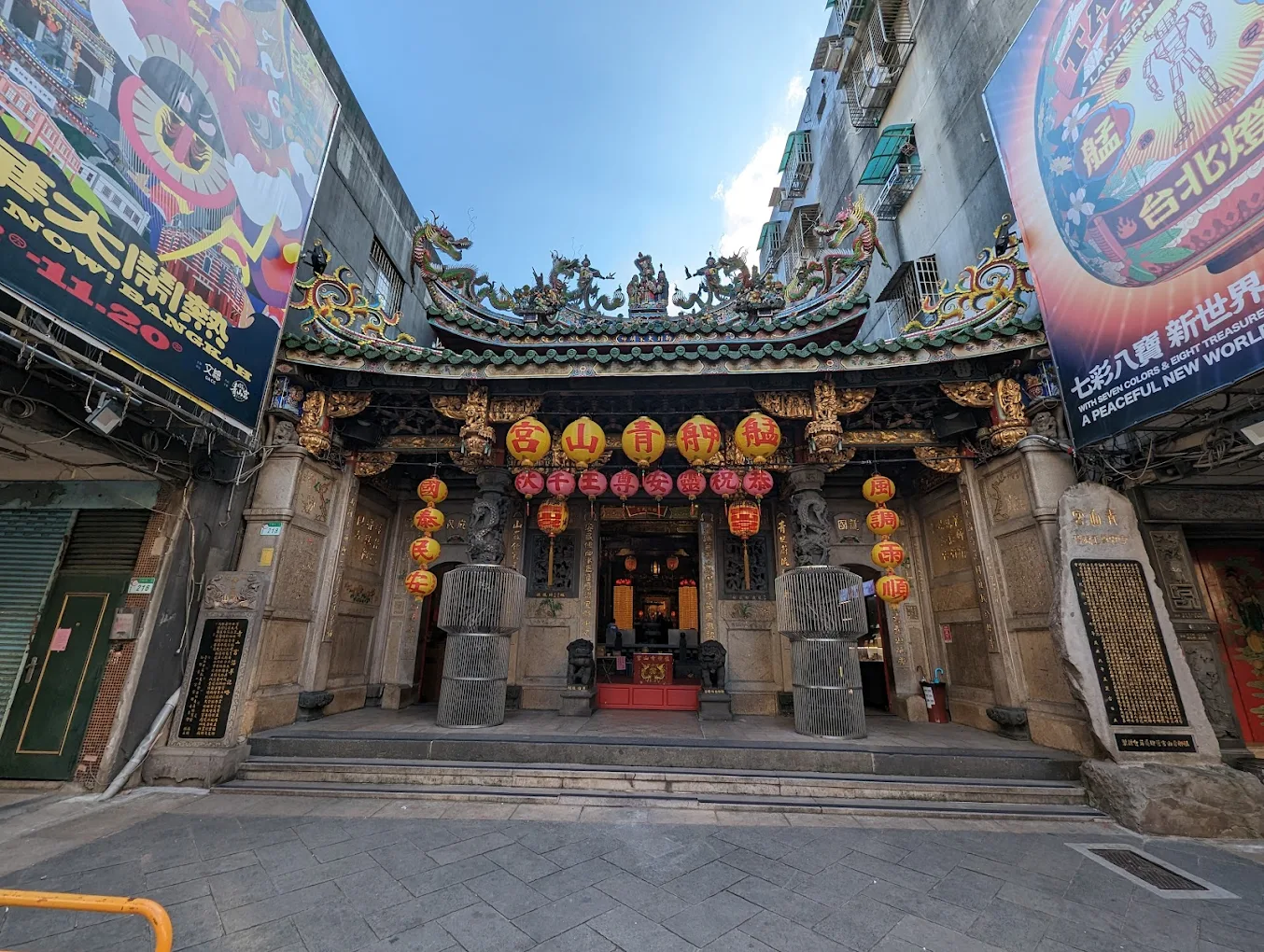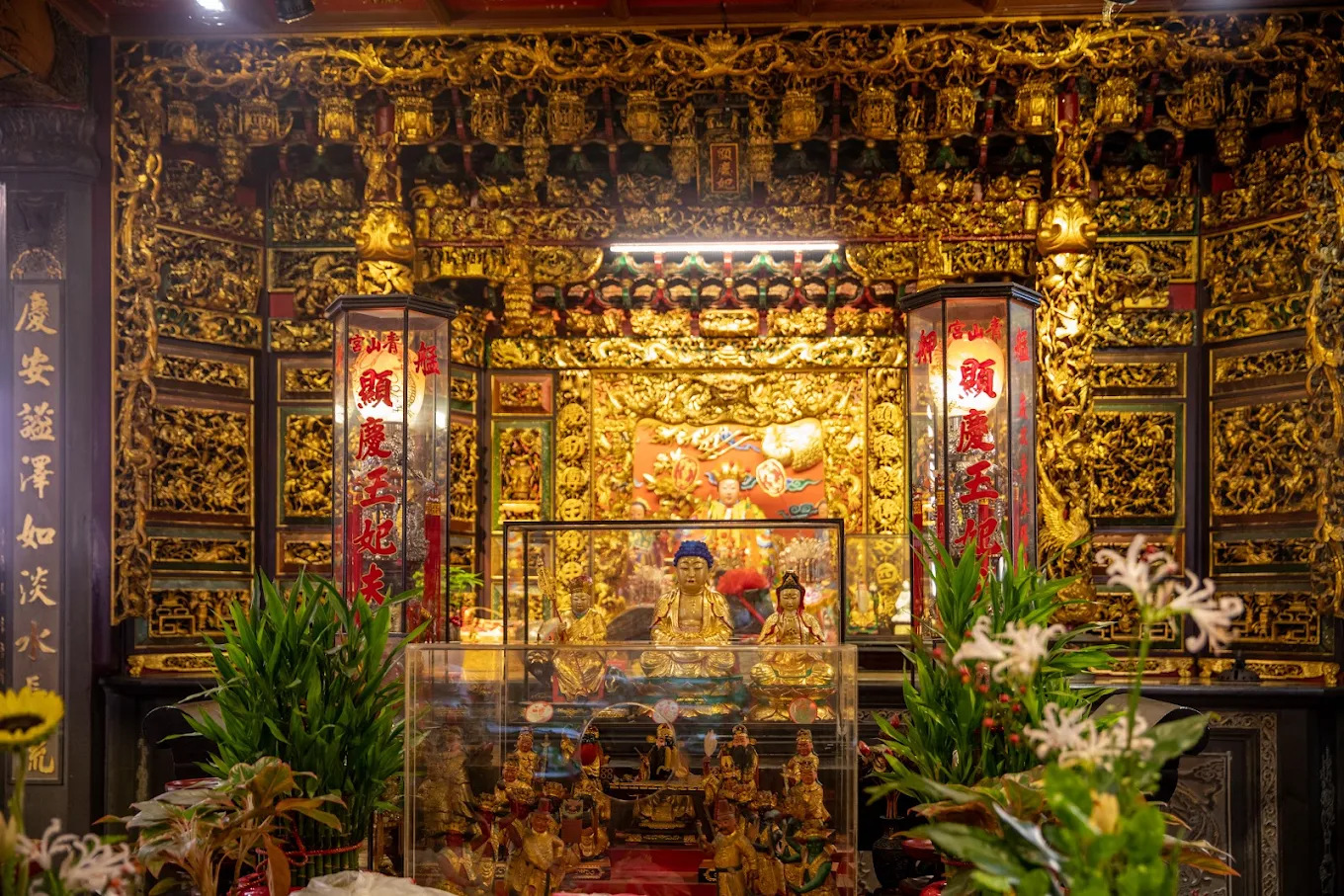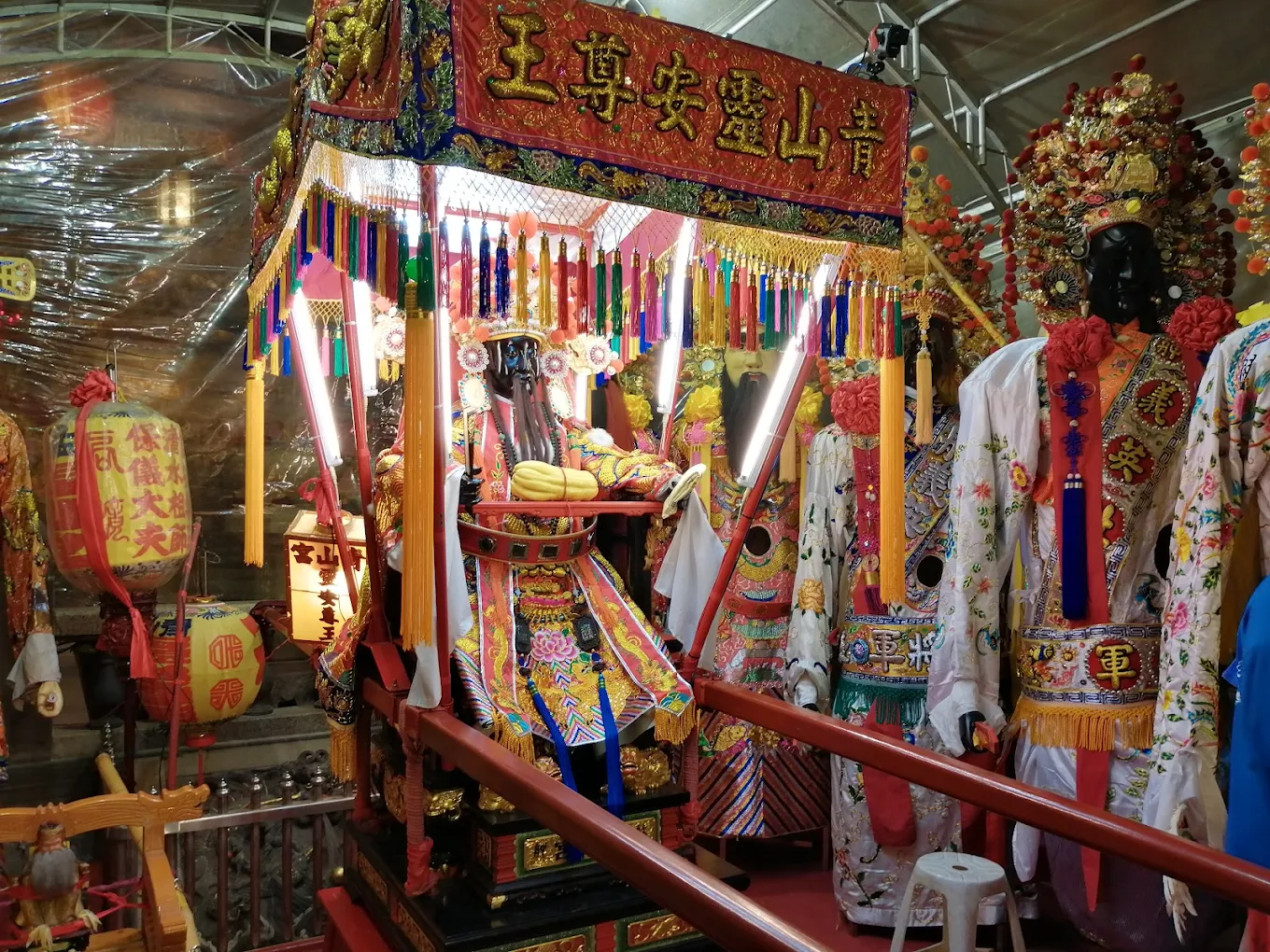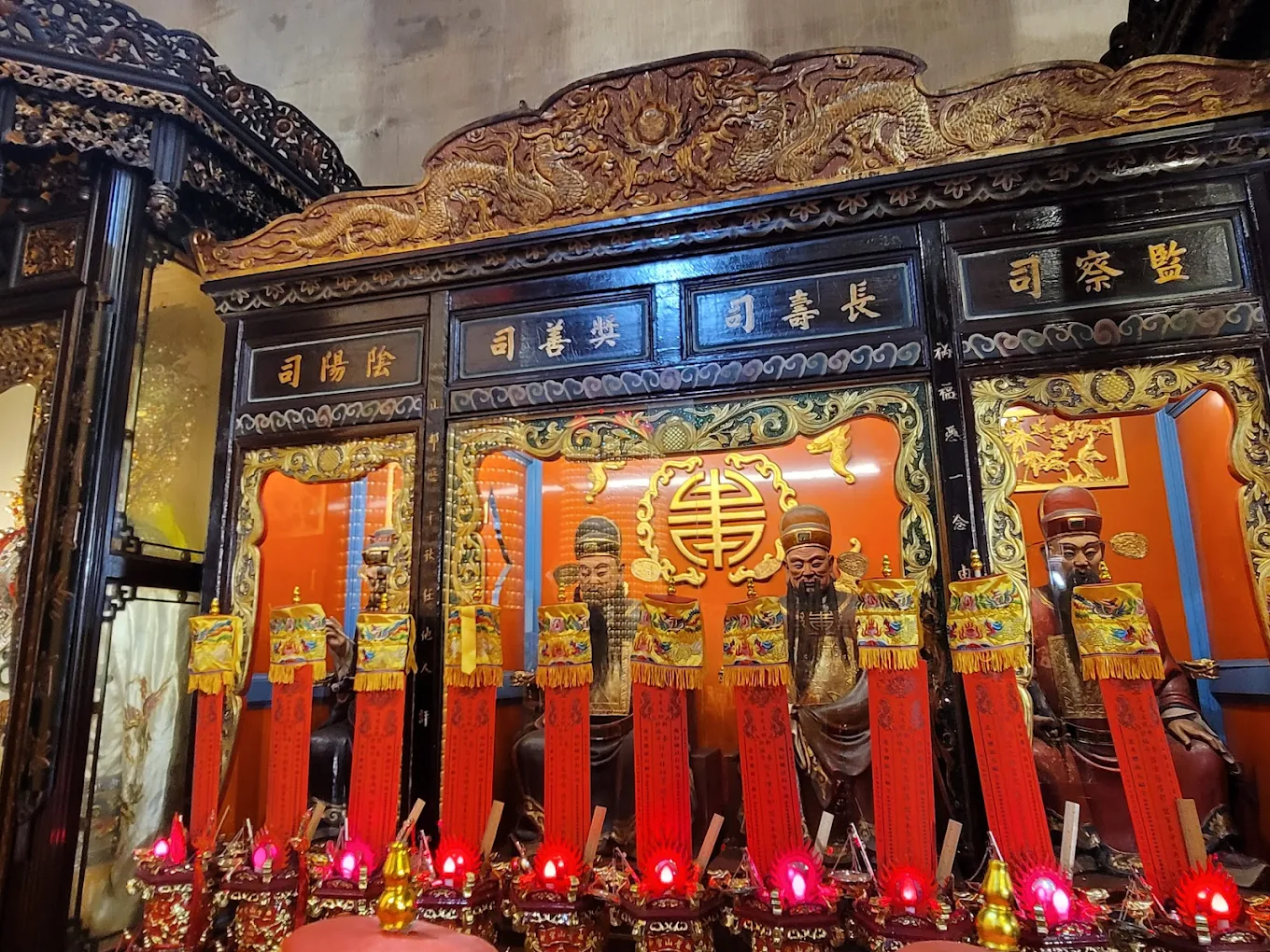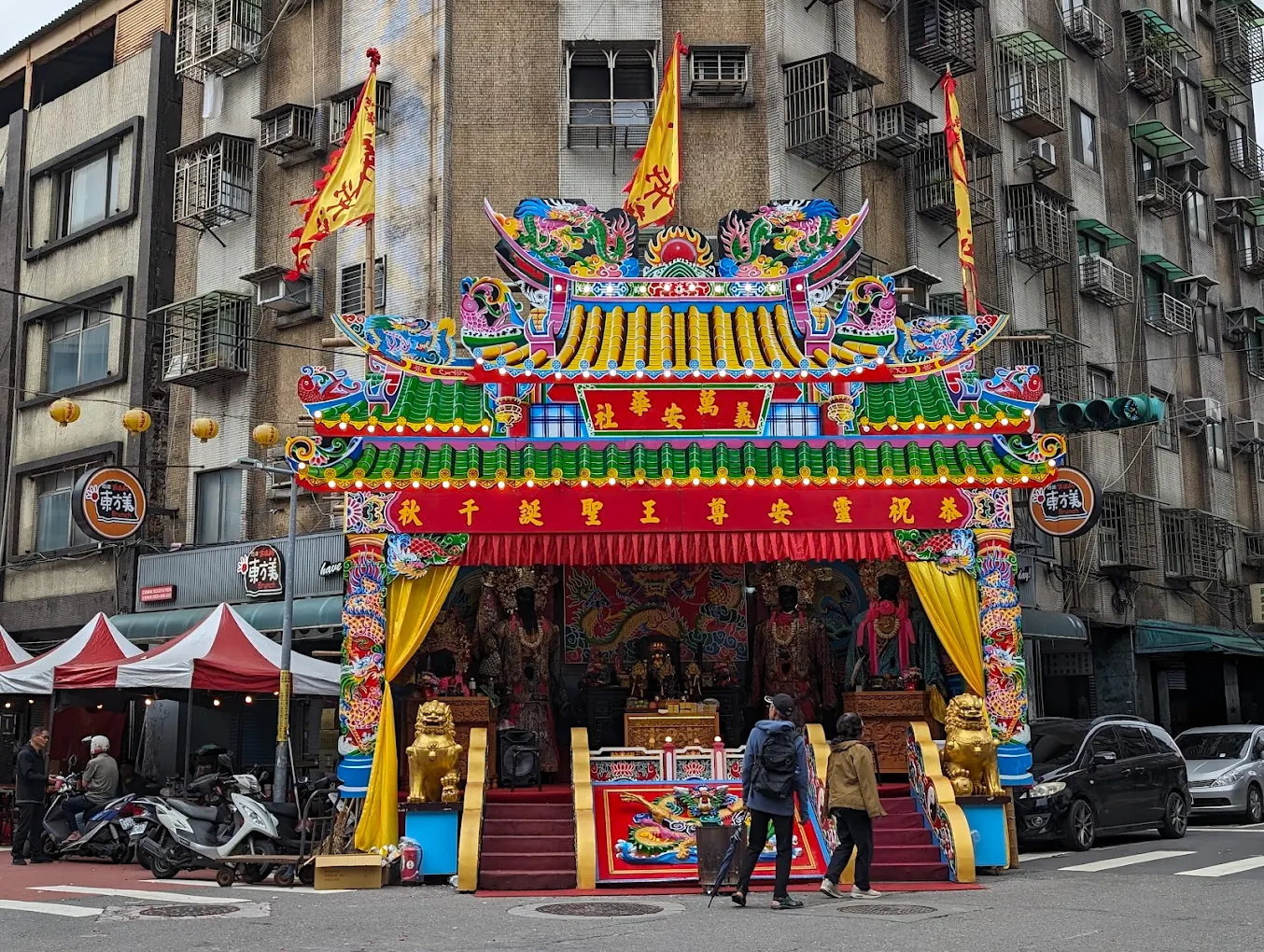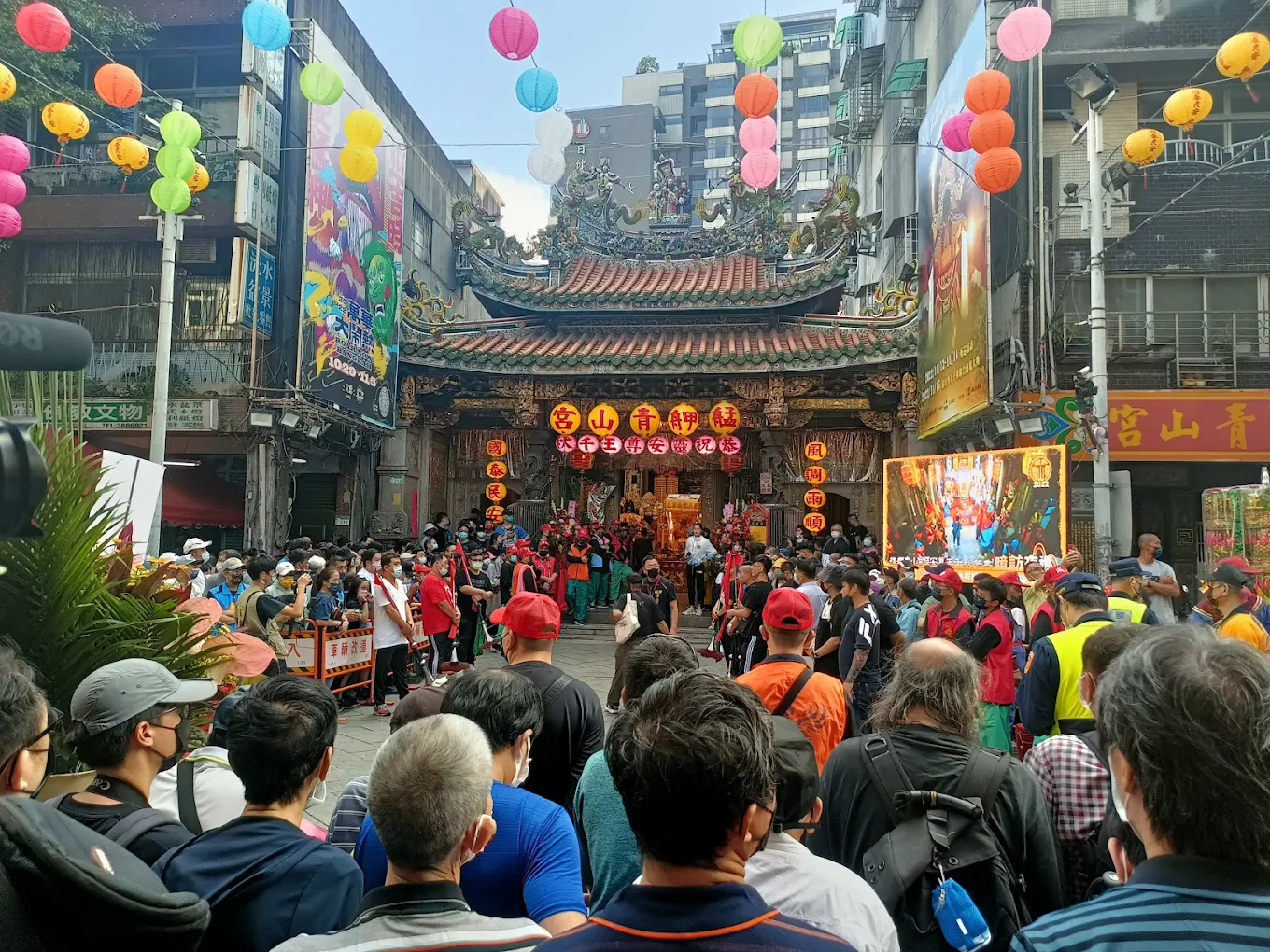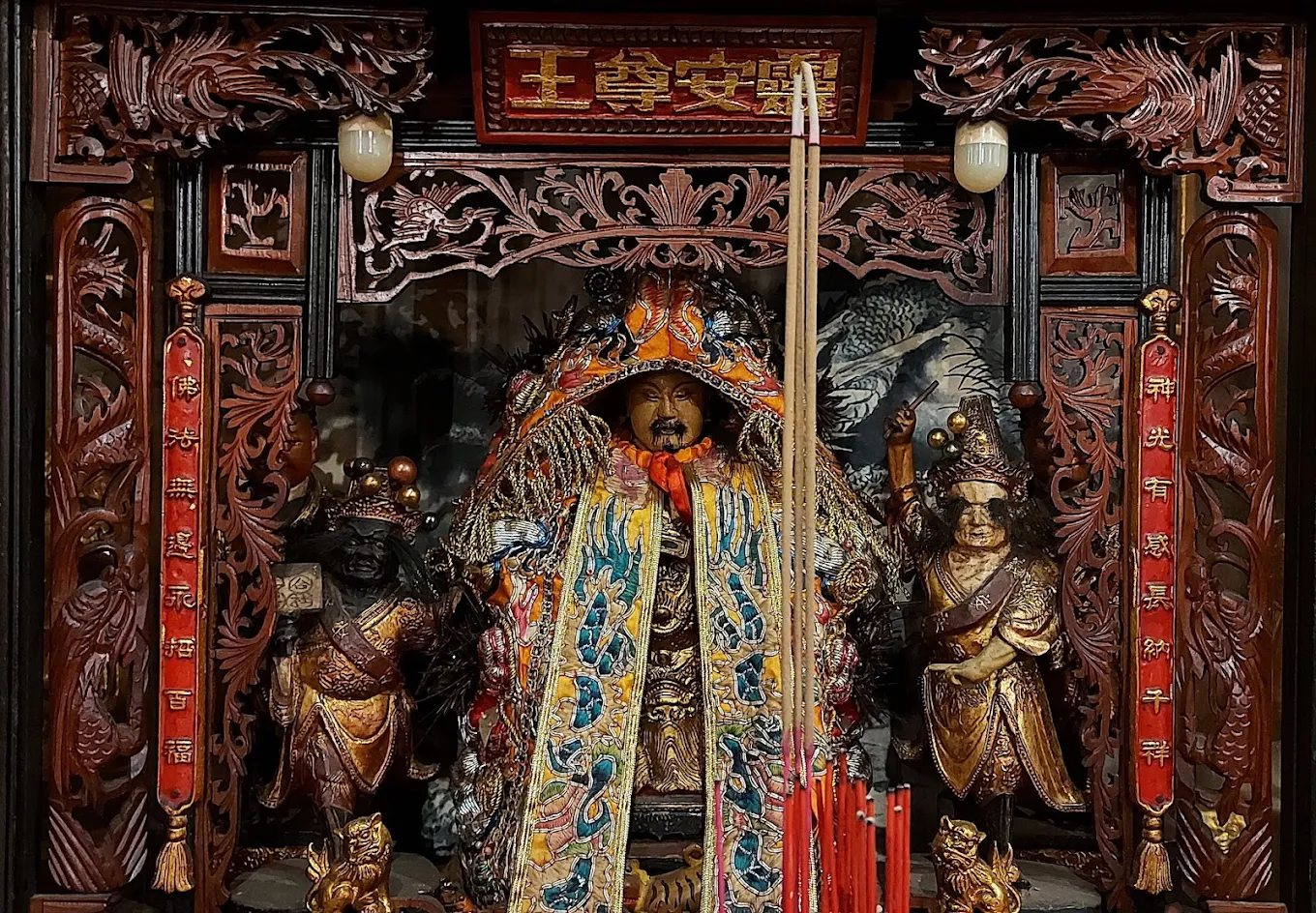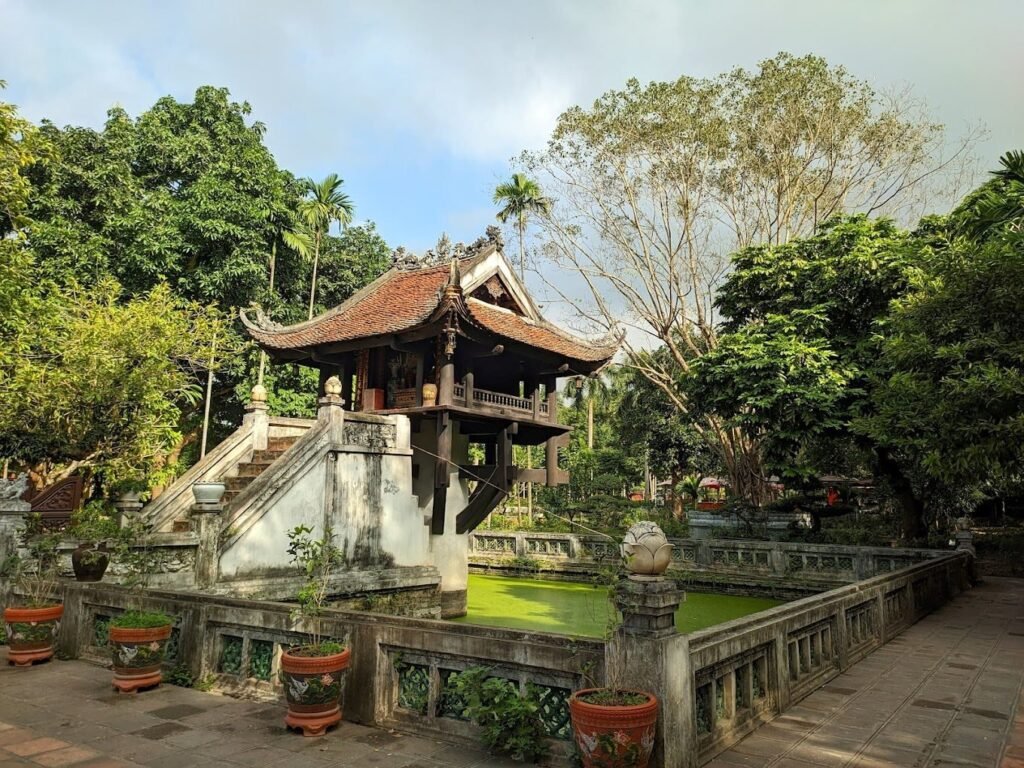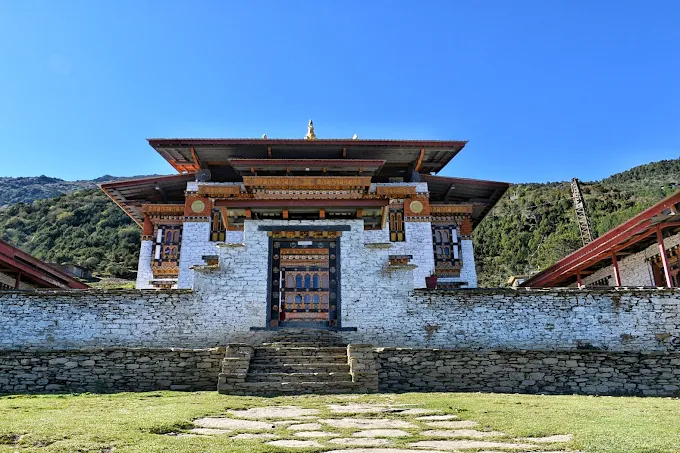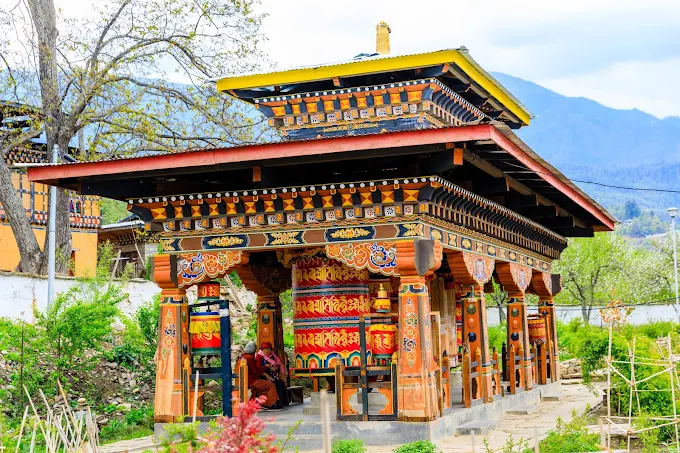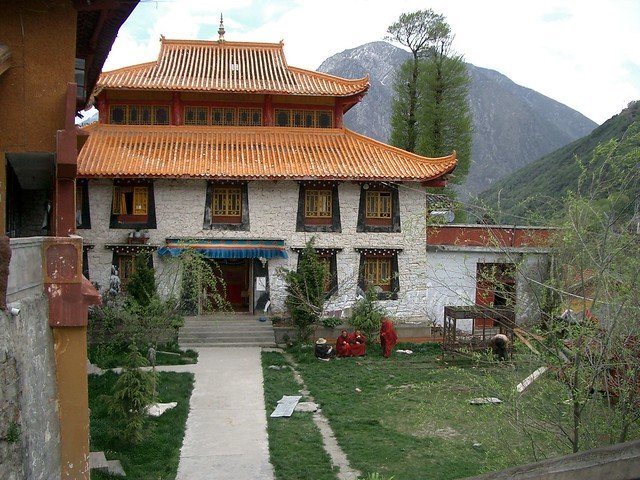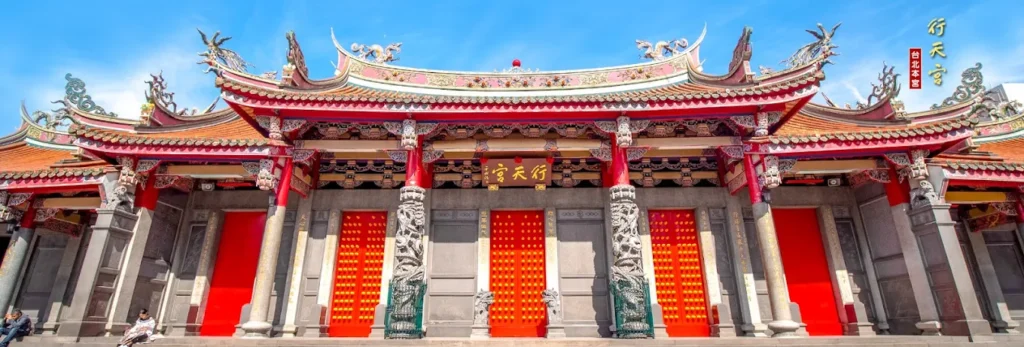Bangka Qingshan Temple: The Fujianese Guardian of Wanhua’s Justice and Healing
Incense haze curls through intricate woodwork, its musky scent blending with the soft chants of devotees in Bangka Qingshan Temple, nestled on Taipei’s historic Guiyang Street. Founded in 1854 by Huian settlers, this sanctuary honors Qingshan Wang [Qīngshān Wáng], a Taoist deity from the Warring States period, revered for justice and healing. Known as Zhang Gun, Qingshan Wang’s miracles—curing plagues and banishing evil—made him Wanhua’s protector, his camphor wood statue’s piercing eyes following visitors, as temple lore recounts. The temple’s three-story Qing structure, adorned with vibrant ceramic dragons, offers serenity amid Wanhua’s lively alleys, quieter than Longshan’s bustle. A Taipei historical site since 1985, Bangka Qingshan Temple invites travelers to feel the pulse of the Qingshan King Festival, a vivid procession illuminating Wanhua’s heritage.
Overview and Significance
Introduction to Bangka Qingshan Temple
Wanhua’s shrine, established in 1854, embodies Taiwanese Folk Religion, blending Buddhist compassion, Taoist harmony, and folk reverence for justice. Its ceramic figures and Qingshan King Festival distinguish it from Longshan’s grandeur. Taiwanese Folk Religion fosters unity, guiding Wanhua through rituals and charity, rooted in Fujianese devotion. The temple draws cultural travelers to its healing legacy. Visiting Bangka Qingshan Temple unveils Taipei’s historic heart.
Historical Journey
In 1854, Huian settlers from Fujian, led by merchant Li Wei, built this shrine after Qingshan Wang’s statue, carried from Quanzhou, became immovable on Xiyuan Road, signaling divine will to stay, as temple records note. A plague ravaged Wanhua, and prayers to the deity brought recovery, swelling devotees. The 1895 Japanese occupation saw the temple host resistance gatherings, preserving Fujianese identity. Renovations in 1971, led by artisan Chen Fu, restored its Qing artistry, earning historical status in 1985. Bangka Qingshan Temple history reflects Wanhua’s endurance.
Cultural Significance
The Qingshan King Festival, held on the 20th–22nd day of the 10th lunar month, animates Guiyang Street with palanquins and firecrackers, as elder Ms. Zhang recalls her father’s 1960s role carrying Qingshan Wang’s sedan, uniting Wanhua. Charity drives, aiding vendors, embody Qingshan Wang’s justice, while workshops on Hokkien folklore draw Fujianese diaspora from Singapore. Songshan Ciyou Temple history shapes Wanhua’s cultural identity.
Unique Legacy
Unlike Xiahai’s matchmaking rites, the temple’s Qingshan King Festival, with midnight patrols, symbolizes justice and healing, a Fujianese tradition. Its syncretic worship mirrors Taiwan’s pluralistic faith, centered on Qingshan Wang’s guardianship.
Community and Global Impact
The festival unites Wanhua residents, their chants echoing along Guiyang Street. Pilgrims join rites, while storytelling workshops preserve Taipei’s heritage, fostering pride across communities.
Historical Anecdotes
In 1884, oral histories recount Qingshan Wang’s statue glowing during a cholera outbreak, guiding healers to save Wanhua, a miracle etched in local memory, cementing his protective lore.
Social Role
The shrine strengthens Wanhua’s bonds through festivals and charity, with incense-making workshops drawing families, their laughter mingling with incense haze, sustaining community ties.
Artistic Influence
Vibrant ceramic dragons inspire Taipei’s artisans, their motifs distinct from Longshan’s bronze reliefs, shaping temple art traditions. Exploring Bangka Qingshan Temple rituals reveals this legacy.
- The shrine thrives in Wanhua’s heart.
- Bangka Qingshan Temple history unveils Fujianese resilience.
- Visiting Bangka Qingshan Temple rituals offers cultural depth.
From Huian settlers’ 1854 prayers, travelers step into the temple’s ornate courtyard, where justice weaves sacred devotion.
Architectural and Spiritual Features
Iconic Design
The three-story Qing structure, with red-tiled roofs, glows under Taipei’s sun, its woodwork casting intricate shadows. Vibrant ceramic dragons, unlike Longshan’s bronze pillars, adorn the facade, reflecting Fujianese artistry. Visiting Bangka Qingshan Temple unveils this ornate design.
Worshipped Statues/Deities
Qingshan Wang’s camphor wood statue, robed in green, radiates authority, its musky scent blending with incense. As Zhang Gun, this Warring States deity dispenses justice and heals ailments, his piercing eyes following devotees, a phenomenon noted in temple lore. His presence anchors Wanhua’s faith, guiding prayers for prosperity. Flanked by Ba Jia Jiang [Bā Jiā Jiàng] (Eight Generals, Pat-ka-chiòng in Taiwanese Hokkien), the statue is central. Bangka Qingshan Temple architecture centers on this sacred icon.
Signature Elements
Ceramic dragons and phoenixes, symbolizing justice and renewal, mark Qingshan Wang’s sanctuary, distinct from Xiahai’s red threads, a Fujianese hallmark.
Materials and Techniques
Huian artisan Chen Fu’s 1971 woodwork, with floral carvings, showcases Qing precision, preserved in temple records, reflecting Wanhua’s craftsmanship.
Lesser-Known Features
Peach reliefs on side walls, their faded hues symbolizing longevity, offer meditative calm, contrasting the courtyard’s vibrant energy.
Preservation Efforts
Wanhua merchants funded 1971 renovations, restoring woodwork with communal labor, ensuring the Qing legacy endures, a testament to devotion.
Environmental Integration
Feng shui aligns the courtyard with Tamsui River’s flow, its banyan tree’s shade fostering reflection amid Wanhua’s bustle, a natural haven.
- Visit Qingshan Wang’s sanctuary for its Qing structure.
- Admire Bangka Qingshan Temple architecture in Taipei.
- Exploring Bangka Qingshan Temple rituals reveals artistry.
From the courtyard’s ornate glow, travelers join the shrine’s vibrant rituals, where Wanhua’s devotion pulses.
Rituals and Practices
Daily Sacred Rites
Devotees offer incense, its haze rising, and pray before Qingshan Wang’s altar, seeking justice, their murmurs echoing in the main hall. Bells chime softly, anchoring Wanhua’s faith.
Festival Traditions
The Qingshan King Festival, on the 20th–22nd day of the 10th lunar month, fills Wanhua with palanquins and firecrackers, as vendor Mr. Lin recalls his 1970s role in the Ba Jia Jiang troupe, banishing evil spirits. Joining Bangka Qingshan Temple rituals during this festival offers vibrancy.
Visitor Engagement
Travelers can join incense offerings, guided by volunteers, their hands tracing Fujianese devotion, immersing in Wanhua’s faith. Visiting Bangka Qingshan Temple offers this ritual immersion.
Spiritual Community Roles
Lay practitioners (jūshì) lead chants blending Buddhist and Taoist hymns, while elders maintain altars, roles rooted in Taiwanese Folk Religion’s spirit.
Interfaith Connections
Qingshan Wang’s worship weaves Buddhist compassion and Taoist justice, reflecting Taiwan’s pluralistic faith, unique to Bangka Qingshan Temple rituals.
- Experience the temple’s rituals firsthand.
- Join Bangka Qingshan Temple rituals during the Qingshan King Festival.
- Visiting Bangka Qingshan Temple offers cultural immersion.
From prayer-filled halls, travelers explore tips to engage with Wanhua’s sacred legacy.
Visitor Information
Navigating to Bangka Qingshan Temple
Guiyang Street’s historic alleys lead to Qingshan Wang’s sanctuary, a short walk from Longshan Temple, with Huaxi Street Night Market’s aromas drifting nearby, a landmark in Wanhua’s heart.
Address of Bangka Qingshan Temple
No. 218, Section 2, Guiyang St, Wanhua District, Taipei City, Taiwan 108.
Visiting Hours and Etiquette
Open 6 AM–10 PM, visitors should wear modest clothing, remove shoes in the main hall, and avoid photography during prayers, respecting Taiwanese Folk Religion customs, as signage advises.
Transport Options
Take the MRT to Longshan Temple Station, a 10-minute walk, or buses along Guiyang Street, weaving through Wanhua’s vibrant markets, offering scenic access to the shrine.
Cultural Immersion Opportunities
Join Qingshan King Festival workshops, crafting paper offerings with locals like Ms. Chen, whose family prayed for justice since the 1980s, a hands-on link to Wanhua’s heritage. Visiting Bangka Qingshan Temple offers this immersion.
Photography Tips
Capture ceramic dragons at dusk, low angles highlighting their vibrancy, while respecting worshippers’ privacy, avoiding flashes in the main hall.
- Visit the temple via Taipei MRT.
- Explore Bangka Qingshan Temple for festival workshops.
- Navigate to Bangka Qingshan Temple in Taipei.
From offering incense in Wanhua’s vibrant lanes, travelers explore the shrine’s philosophical depth.
Cultural and Spiritual Insights
Religious Philosophy
Taiwanese Folk Religion at Qingshan Wang’s sanctuary blends Buddhist compassion with Taoist justice, fostering community unity. Qingshan Wang’s guardianship ensures fairness, guiding Wanhua’s ethics through resilience and healing. This syncretism, rooted in Fujianese values, shapes Taipei’s cultural identity via rituals like the Qingshan King Festival. The temple’s philosophy grounds devotees in shared values. Visiting Bangka Qingshan Temple unveils this depth.
Cultural Narratives
Legends of Qingshan Wang curing a 1854 plague inspire Wanhua’s devotion, as elder Mr. Wu recounts his grandfather’s tale of a saved family, cementing his protective lore in Taipei’s memory.
Modern Cultural Connections
Qingshan King Festival posts on social media, tagged #QingshanPalace, draw younger devotees, linking Wanhua’s heritage to Taipei’s digital culture, boosted by events like Roar Now Bangkah. The temple connects to this vibrant scene.
- Discover the temple’s philosophy.
- Explore Bangka Qingshan Temple narratives.
- Visiting Bangka Qingshan Temple connects to modern culture.
From Wanhua’s philosophical depths, travelers heed the call to explore Qingshan Wang’s vibrant legacy.
Why You Have to Visit
Vibrant ceramic dragons gleam under incense haze in Wanhua’s ornate courtyard, a Fujianese beacon of justice and healing. Qingshan Wang’s protective legacy, woven through lively Qingshan King Festival processions and intricate woodwork, invites travelers to join Wanhua’s rituals. Visiting Bangka Qingshan Temple unveils Taipei’s historic soul, where Huian faith endures in timeless grace, a journey into the heart of Fujianese devotion.
- The temple is a must-see in Taipei.
- Experience Bangka Qingshan Temple ceramic figures.
- Visiting Bangka Qingshan Temple reveals Wanhua’s heritage.
